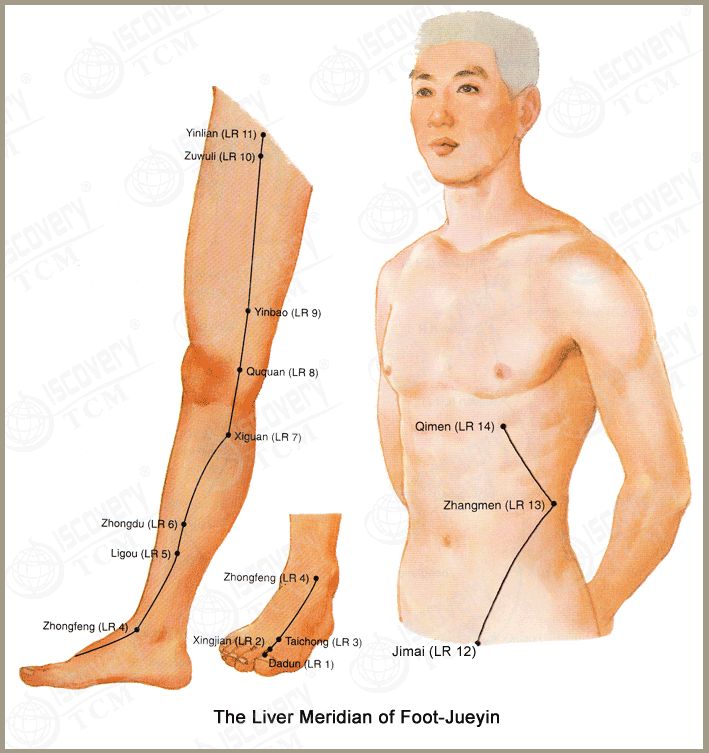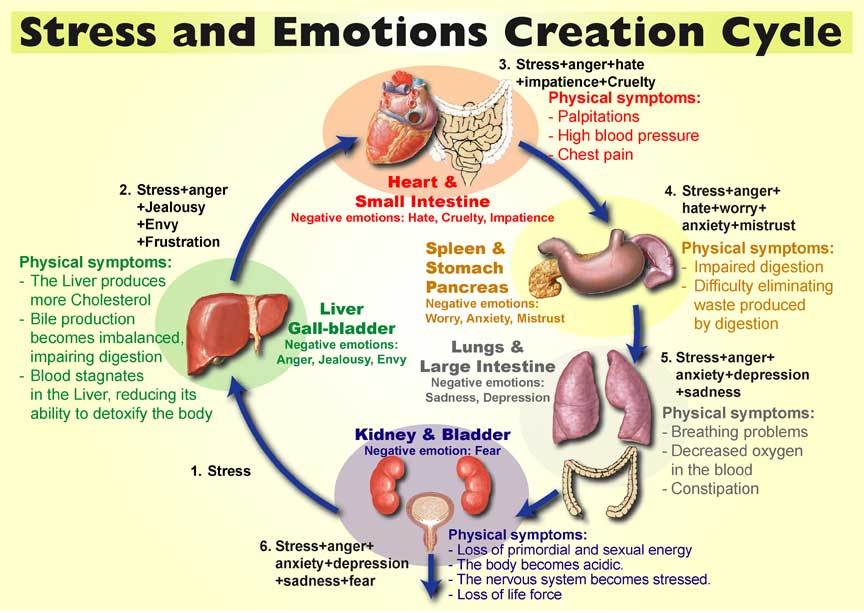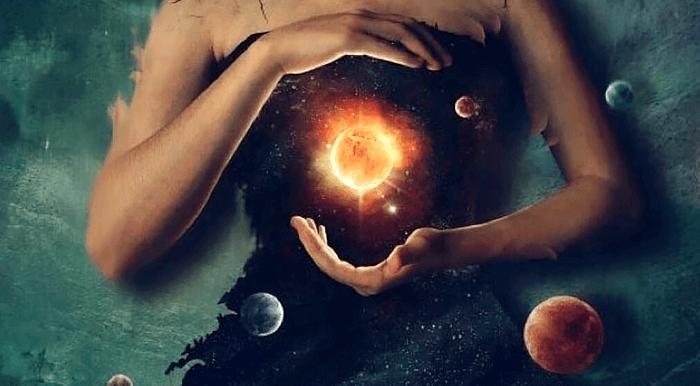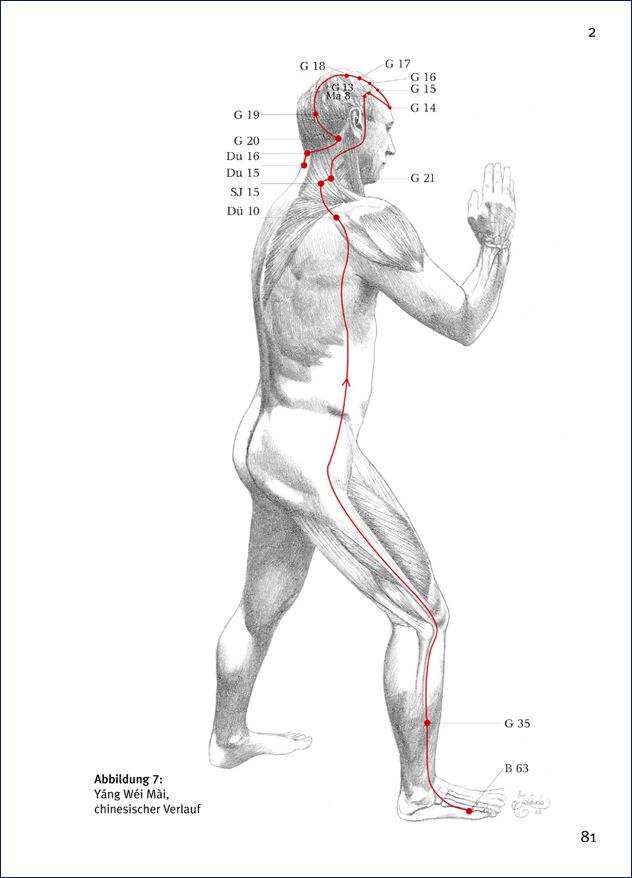
Moving Forward in Life: Acupuncture to Treat Problems Rooted in Past Trauma
Many of our problems in life, including health challenges, involve the passage of time and difficulties inherent with that. Within Chinese medicine, the Liver is the acupuncture channel (and organ) associated with the passage of time, especially our past.
The Liver’s acupuncture channel is the major avenue for “rectification” of body, mind and soul. Rectification is a process of forgiveness: for ourselves and others. It also involves acceptance and the creation of a sense of completion: the ability and willingness to let go of the past, forgive, accept and learn from our experiences.
The Liver is responsible for the smooth flow of Qi-energy in our body. It controls cyclical rhythms, synchronicity and the smooth unfolding of time. The Liver is what keeps the digestive organs of the Stomach and Spleen in order: the Stomach sending its energy downwards and the Spleen ascending up. The binding up of Liver’s energy causes frustration and stagnation. It can also cause time to seem to stop or bundle up, preventing movement into the future or hyperactive pressure to move to fast in life.
On a non-physical level, the the Liver is involved with an aspect of the soul called the “Hun” or non-corporeal aspect of our subtle selves. The Hun is the part of ourselves that travels between worlds, between lives, between dimensions, especially in the dream state. The Hun has access to the collective conscious as well as the accumulated wisdom of this and past lives. It is also the element of our subtle selves that projects us into the future. The Hun is the force that gives psychics the ability to see into the future, as well as the rest of us the ability to reflect on and recall the past.
Many physical and mental problems are rooted in our inability to let go of unresolved experiences from the past. Some of which can be traumatic, others are just sentimental. As the Buddhists say, the seed of suffering is rooted in both pleasant and unpleasant experiences. We resist the unpleasant, yet we grasp the pleasant. Both types of experience can be difficult to let go.
The overall theme of the Liver’s acupuncture channel is completion. The Liver is a digestive organ, but for that which is difficult to break down and metabolize. It is also a storage organ, providing energy that is not immediate, but slow-release. In Chinese medicine, the Liver “stores the blood.” Blood in Chinese medicine is seen as the vehicle for the spirit-mind (Shen) to circulate throughout the body. Blood is consciousness; it is also emotion, sensation and memory. The Liver as the storage regulator of the body is that which holds onto experiences and memories, depositing them into the brain and uterus to create and recreate our reality.
Reality is not the same for all of us; it is colored by our experiences. We see the world as we see ourselves. For example, an angry person often lives in an angry world. A fearful person lives in a scary world. To change our experience of the world often requires working with the Liver and its storage of blood.
The Liver deposits unresolved material (physical, mental, emotional, experiential) into the region of the “belt,” which circulates around the waist, into the urogenital area. These unresolved issues can manifest as belly fat, genital, gynecological, prostate and digestive problems. In Chinese medical language: the development of “Damp-Heat” is seen as the root of all degenerative conditions. When unresolved issues drain into the belt, Damp-Heat is the result.
We degenerate because we are unable to fully metabolize and digest our experiences and desires. We either smother that which we want (heat-passions) as a sense of futility, denial or confusion (damp), or we repress them into somatic physical problems. We allow ourselves to age and degenerate by holding onto the past: that which we sentimentalize and constantly try to recreate. We fail to fully process and eliminate the past.
The two acupuncture points that best express the spirit of the Liver are the final two on the channel: LR-13 “the cycle gate” and LR-14 “completion gate.”
LR-13 is the gateway by which unresolved, undigested material is placed into the belt. This becomes the seed of our future, that which we recreate and repeat. It can also become the seed of our degeneration. It is the gateway into the Belt channel.
LR-14 as the gate of completion moves a person into the the Lungs, into full release, acceptance and a new beginning. It is the passage into rebirth.
These two acupuncture points are directional: LR-14 moves upwards into an area that allows us to become lighter: the Lungs and our breath. LR-13 moves down into the intestines and uterus to store, ferment and be recreate.
The upper path is that of surrender. The lower is that of holding on and staying stuck: fermenting with our unresolved issues.
Much of what I do with patients in my acupuncture practice involves helping them digest, metabolize and complete unresolved experience. Some of that experience is traumatic: blood that has become static that needs to be moved. For others, the unresolved material has turned into damp-heat, causing a form of degeneration. Others feel a sense of heaviness, as if they are stuck or even paralyzed in their lives.
For some, digesting and moving on in life requires rectification of the past. They hold on because they have regret, guilt, or fear that nothing in their future could possibly be as sweet or fulfilling as what they’ve had in the past.
Using the Belt Channel (called Dai Mai in Chinese medicine) urges the body to begin draining Damp-Heat lurking in the lower abdomen. The initial point used to drain Dai Mai is LR-13.
LR-13 is called “cycle gate,” yet it also has another name: the “camphorwood gate,” referencing the type of wood used to build coffins in ancient times. Camphorwood is a natural preservative. The image of LR-13 is like a coffin we are using to preserve that which has died, to keep it from disintegrating. What this causes is the same theme or experience to recycle itself. Instead of reaching completion and graduating from a lesson, we choose to preserve it and relive it again and again in cycles. Or we keep the dead experience within us for sentimental purposes, preventing our ability to move forward in life into the new.
The image of LR-13 and LR-14 is like that of a ghost. Instead of being able to ascend into the heavens after death, the soul chooses to remain on Earth as a ghost or “wandering spirit.”
To work with LR-13 is to begin to let the earthbound “ghostly” aspects of ourselves drain back into the earth and disintegrate. This ideally allows that which is light and subtle within us (spirit) to be released from the heaviness of damp, ghostlike attachments that keep us rooted in stasis and repetition. LR-13 can be a point of exorcism.
Dai Mai is often combined with the acupuncture point TH-5 “the outer gate” and the channel Yang Wei Mai (the active linking vessel) which directs a person towards future aspirations. Yang Wei Mai connects all of the Yang (active) aspects of the self so we can begin to “take flight,” finding the ability to ascend once more. This is often necessary for those who tend to be “heavy” and rooted in habits, memories, traumas and sentiments.
LR-14 has a different flavor than LR-13. Each acupuncture point can be seen as both a challenge and a cultivation. They are like lessons we must achieve and learn from. When connecting with a patient and their condition, a healer must determine which lesson in life they are cultivating through their experience. This can be matched with an acupuncture point, or combination.
The art of acupuncture is to discover the correct acupuncture point of resonance for a person’s experience at that very moment. Other points added to the treatment must reflect the person’s past, potential present as well as the resources they need to gather to achieve their healing, or the elements they need to shed to become free.
LR-14 “the completion gate” is the passageway into renewal. It is the last acupuncture point in the sequence of the channels, cycling into the Lung channel for a new “birth.” However LR-14 is where we tend to find ourselves in a “Shao Yang” state, meaning ambivalence and confusion: wanting to live in two different worlds. Instead of choosing, we try to keep two separate realties going at once. As a result we never fully let go and move on, tending to oscillate between “then and now.”
“Shao Yang” is considered a syndrome where symptoms alternate, seeming to get better only to return periodically. This can be seen physically like in the case of Lyme’s Disease where symptoms come and go, but never seem to fully resolve. Shay Yang can also be seen in mental-emotional and experiential states, where we seem to make the same choices, attract the same situations and relationships again and again. Or we hold onto who we have been, while also engage in who we are becoming, but do so alternating. It is a case of “two steps forward, one step back.”
The true cultivation of LR-14 is to fully let go into our mysterious, unknown future: to let the wind of destiny push us into our next life. The opening point of Dai Mai “courses the wind,” allowing the changes of our lives, even the catastrophes, move us into our new reality. GB-41 is called the “governor of tears,” pushing us to stop lamenting and sentimentalizing so we can let the “wind” of change carry us into our next stage in life.
Fully letting go to move into our next chapter in life requires courage, especially as we get older. We tend to fixate on that which we like and resist act which brought us pain. We become less open to new possibilities and tend to grasp for the past.
Letting go and moving on also requires that we be ready to do so, that we feel complete and resolved. Sometimes we need to revisit the chapters of our lives, work through the stories of our past and rectify. The point GB-28 along Dai Mai is a very powerful point related to revisiting our past so we can put it into the context of our overall life journey. The name of GB-28 is “Wei Tao,” the “path of our autobiography”: the links of our life chapters and how they fit into our Tao/way/destiny.
To rectify involves forgiveness, but it can also allow us to fully embrace how our past and the events of our lives have shaped us. It can bring a state of grace, especially as we allow the Liver to move into the Lungs. We begin to see the gifts we’ve received in our lives, even from the most disappointing and traumatic events. We can create links between what we’ve done, what’s been done to us, what we’ve been through and why. On a grand scale, rectification is like a life review. But it is something that can happen many times during our life, allowing us to fully embrace, digest and complete our experiences so we can move onto our next chapter.














No Comments